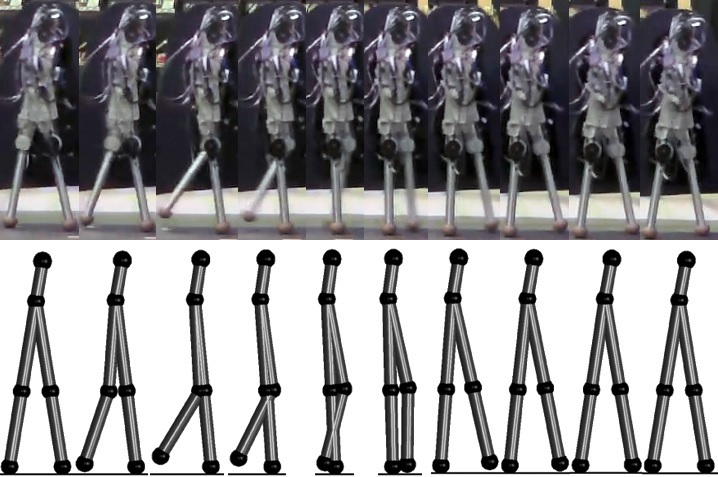Abstract
A number of foot placement strategies for walking have been proposed that make use of widely varying model complexities. Although a number of successful demonstrations have been individually shown in simulation and on physical robots, it is difficult to make a direct performance comparison due to the large differences in hardware, gait generation strategy, control system gains, actuator saturation limits, sensor noise, and many other physical limitations. Here we present a quantitative stability comparison of four foot-placement strategies based on The Inverted Pendulum Model (IPM) [1], Capture Point (CP) [3], Foot Placement Estimator (FPE) [5], and Foot Placement Indicator (FPI) [4]. We implement each of these strategies in simulation and evaluate the Gait Sensitivity Norm (GSN) [2] as a measure of stability during a push disturbance using step duration as a gait indicator. We give a quantitative comparison of these approaches under the same physical simulation. We also discuss our progress in comparative push recovery experiments on our new torque controlled planar bipedal robot with series-elastic actuators.
Copyright Notice
The documents contained in these directories are included by the contributing authors as a means to ensure timely dissemination of scholarly and technical work on a non-commercial basis. Copyright and all rights therein are maintained by the authors or by other copyright holders, notwithstanding that they have offered their works here electronically. It is understood that all persons copying this information will adhere to the terms and constraints invoked by each author’s copyright. These works may not be reposted without the explicit permission of the copyright holder.
